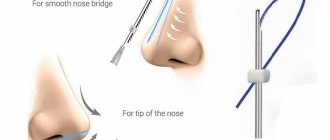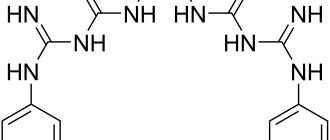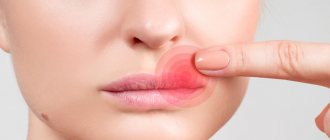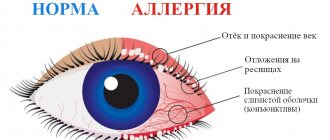Nasal congestion is a symptom caused by various factors. This can be caused by a cold, viral, bacterial or fungal infections, allergens, hormonal changes in the body or mechanical damage.
Most often, otolaryngologists deal with the viral and allergic nature of Qatar, and the third relative to the frequency of complications is bacterial rhinitis.
Viral rhinitis occurs in most cases during periods of epidemiological instability. Allergic rhinitis can occur throughout the year, depending on the allergen. When Qatar appears in response to flowering plants, it is usually spring or early summer. In the case of allergies, dust and animal fur may leak from the nose as long as the person has contact with the allergen.
Rhinitis brings negative symptoms such as nasal stiffness, wheezing, swelling of the mucous membrane, difficulty in breathing, etc. Specialists suggest various nasal products including ointments to relieve the patient's complaints.
In our article we will talk about nose art. We will find out which nasal ointment is best to use in prevention and treatment, and we will look at the most popular anti-inflammatory drugs used in modern oxyrology.
Antiviral ointments for the nose
Let's look at two popular antivirals - Viferon and Oxyoxolin. These ointments are used before leaving home and in crowded places during an epidemic. Preventive ointments form a protective barrier in the nasal cavity, preventing the spread and multiplication of viral infection.
Viferon
Interferon, the main active ingredient in the preparation of Viferon, increases local immunity in the nasal cavity. The mucous membrane is actively based on infectious attacks, preventing the development of acute respiratory infections. Viferon should be used as directed or as directed by physicians. The drug is recommended for children, elderly children, pregnant women and adult women.
Viferon is often used to treat viral infections. It is also indicated in the case of herpes, tips, common warts and other diseases.
The drug has no systemic activity and only works at the site of application.
Oxolinic ointment
This ointment has two advantages - quality and price. There is probably no person who has not heard that “oxolinka” helps to avoid colds. Simply spread the ointment on the nasal wires and protection against harmful viruses is provided. Oxolinum Oxygen is a preventive measure. Details about the principles of use can be found in the official instructions.
The ointment is usually used three times a day. In the prevention and treatment of viral colds, 0.25% oxolin is usually used. In rare cases, the ointment causes negative symptoms such as burning, redness and dryness. These symptoms are associated with individual intolerance to the composition.
“Oxolinka (ointment) is not only used in the nose, it is also used for the conjunctival mucosa. Herpes, infectious molluscum, psoriasis and shingles, scalp hard waxing dermatitis, warts are direct indications for the use of oxolin oxolin.
Groups of antiviral drugs and requirements for them
The development of antiviral drugs is a knowledge-intensive process that requires the use of advances in sciences and areas such as virology, molecular biology, immunology, chemistry, pharmacology and pharmacy. Highly qualified specialists and significant economic and time investments are also required.
Among the main requirements for antiviral drugs:
- the ability of a drug to selectively prevent certain stages of viral reproduction without interfering with the life processes of host cells;
- the highest possible bioavailability, ensuring constant maintenance of sufficient concentrations of the drug in the cells.
The following antiviral agents meet all these requirements:
- specific anti-influenza drugs (for example, aminoadamantanes and neuraminidase inhibitors);
- medications used for respiratory syncytial infection;
- drugs that are necessary in the treatment of herpes (acyclovir and its derivatives);
- medications for the treatment of HIV infection;
- antiviral drugs with non-specific antiviral activity that can be used to treat a wide range of different diseases, including coronavirus. These drugs include interferons.
Ointments with a disinfecting effect (antiseptics and antibiotics)
This group includes ointments that have the ability to destroy bacterial microflora. The most common use of disinfectant swabs in Qatar is when the color of the step changes to yellow, green or white. This mucous nasal secretion indicates that something is wrong with the nasal cavity.
To prevent the spread of inflammation to the nasal sinuses, Vishnevsky ointments, synthomycin, tetracycline, bactroban and others are used. Nasal ointments should only be prescribed by a doctor.
Tetracycline ointment
For example, tetracycline nasal ointment has a pronounced antibacterial effect and can be present in different percentages (1 or 3%). Obviously, the higher the concentration, the stronger the effect of the ointment. For children, tetracycline ointment (1%) is best. It should also be remembered that tetracycline ointment is used only after the age of six.
Tetracycline ointment is used not only in otolaryngology. Dermatological problems such as eczema, acne and furunculosis are also treated with tetracycline. The ointment is used only after 8 years.
Vishnevsky ointment
Vishnevsky's antiseptic ointment has a specific odor that most patients do not accept. The basis of the ointment is castor oil, birch tar and xenoform.
The advantage of the ointment is that it can be used for various ailments. The ointment is inexpensive and easy to make. The ointment has an antiseptic and healing effect and retains its properties at different temperatures.
In otolaryngology, Vishnevsky ointment is used for rhinitis and sinusitis. The ointment is administered using turundas. You can also make a combined anti-inflammatory nasal cream at home, which will include Vishnevsky ointment. Among the additional ingredients, it is recommended to take Kalanchoe, cyclamen, and aloe. All ingredients must be in equal proportions.
The duration of treatment depends on the severity of the inflammatory process, on average from 10 to 20 days.
Turpentine ointment
Composition of the ointment: purified turpentine oil (from pine resin) and water / petroleum jelly. The ointment has an antiseptic, disinfectant, analgesic, distracting, and irritating effect.
The ointment is used for rheumatic diseases, myositis, bronchopulmonary diseases. Due to its warming effect, the ointment is widely used for colds and coughs. The patient's feet, chest and back are rubbed. Warming ointments are not used around the heart.
After rubbing, put on warm clothes and woolen socks and go to bed. Warm tea with honey and lemon will also help.
Turpentine ointment is used in pediatrics, but only from the age of two. It is necessary to obtain permission to use ointments from a pediatrician.
All antibacterial ointments are indicated for long-term rhinitis, when the nasal mucosa cannot regenerate due to a high level of bacterial microflora.
Before applying any antibacterial ointment, it is necessary to conduct a bacterial test to determine the exact causative agent of bacterial rhinitis. In most cases, the cause is Staphylococcus aureus.
Which antiviral drugs are best for treating different diseases?
Antiviral therapy is selected by a doctor who prescribes medications in accordance with the patient’s condition and medical history. There are no drugs that are suitable for everyone. For different groups of patients, experts recommend synthetic compounds, substances of plant origin and interferons, which occupy a worthy place in the arsenal of practical medicine. And this is quite understandable. Interferons in the form of natural factors of nonspecific defense of the body and mediators of immunity have a wide spectrum of action. Interferon is included in the formula of the drug VIFERON.
VIFERON is a complex antiviral immunomodulatory drug with a broad spectrum of action for children and adults. The original formula of the drug includes a combination of interferon alpha-2b and highly active antioxidants (vitamins C and E). The drug is available in the form of suppositories, ointments and gels. It refers to nonspecific antiviral drugs that can fight various types of viruses at any stage of their development.
The drug VIFERON was developed as a result of fundamental research that showed that the combination of interferon and antioxidants enhances the effectiveness of the treatment. Widely used in pediatrics, neonatology, gynecology (including for the treatment of pregnant women from the 14th week of gestation), dermatology, urology, therapy and infectology.
VIFERON is included in the list of VED drugs (vital and essential drugs) and in more than 40 federal standards for the provision of medical care to adults and children, approved by the Ministry of Health of the Russian Federation, as well as in more than 30 clinical recommendations (treatment protocols) for the provision of medical care to adults, incl. including pregnant women and children, developed by leading professional scientific and medical associations.ii
Combined ointments for the nose
The therapeutic effect of combined measures is achieved by eliminating various causes of rhinitis. For example, the combination ointment Levomekol contains two components: chloramphenicol and methyluracil. The first destroys bacteria, the second has anti-inflammatory and regenerating properties.
Other combination nasal products may also have antiallergic, sedative, decongestant, and vasoconstrictor effects. In addition to levomekol, the following drugs are usually used:
- Sunoref,
- evamenol,
- boromenthol and other ointments.
For nasal ointment to be effective, it is necessary to establish the exact cause of the runny nose, especially if it is necessary to use combination drugs.
The combination of active ingredients may vary. Somewhere in the composition, anti-inflammatory and antipruritic agents predominate, so this nasal ointment is more suitable for allergy sufferers. Combinations with a predominance of antibacterial agents are intended for snot with complications (yellow, green, purulent discharge).
After examining the nasal cavity, the otolaryngologist will help you choose the appropriate combination drug.
Ointments with essential oils
Esters have long been used to treat colds. When leaking snot, you should not resort to antibiotics and other strong medications; it is better to choose a nasal ointment based on natural products, which will be effective in case of a cold or when a viral infection begins to spread.
Sometimes essential oil ointments can cause allergic reactions, so make sure you don't have any adverse reactions.
Pinosol, Pulmex, Doctor Mom - ointments containing essential oils of eucalyptus, rosemary, nutmeg and pine. Such ointments are applied to the wings of the nose, like the famous “star”. Essential vapors eliminate inflammation, swelling and mucous discharge from the nasal passages. For children, ether-based ointments are prescribed only after consultation with a pediatrician or pediatric otolaryngologist.
Evamenol
The ointment has a pronounced anti-inflammatory and local irritant effect. Active ingredients: eucalyptus oil and menthol. The drug is prescribed for rhinitis (acute and chronic), pharyngitis and other inflammatory processes of the nasopharynx.
Evamenol is an excellent ointment for a stuffy nose. Thanks to the ointment, the blood vessels narrow, patients note improved nasal breathing. Sometimes negative allergic manifestations are observed during the use of ointments; this is due to individual sensitivity to the composition.
It is recommended to apply a small layer of ointment to the nasal mucosa up to three times a day. The application period is up to 10 days. Despite the simplicity of the ointment, Evamenol is prescribed only by a doctor, since essential oils can cause allergies.
In pediatrics, Evamenol is approved for use only after the age of two.
Ointment "Doctor Mom"
The presented ointment has a complex effect. It contains ingredients such as eucalyptus and nutmeg oil, menthol, camphor and others. When applied to the treated area, the ointment has an antiseptic, anti-inflammatory, slightly distracting and irritating effect on the skin. Vasodilation, pain subsides, prostaglandin synthesis is inhibited, bacterial and fungal microflora are eliminated.
Doctor Mama ointment is recommended for use after the age of two for myalgia, ARVI, colds, coughs and symptoms accompanying these pathologies.
Contraindications: Hypersensitivity, burns, dermatological diseases, allergies.
The ointment is prescribed up to three times a day. Rub with small movements into the nostril or septum area.
"Golden Star"
“Zvezdochka” is a universal lotion with a local irritating and distracting effect. What not to treat with this unique balm. It contains clove, bay, eucalyptus and other ingredients.
It should be noted that this balm is not applied to the mucous membranes; it is used only in the immediate vicinity of the pathological process. To ease breathing, relieve headaches and fractures, apply a thin layer to the wings of the nose or place an open “star” next to the patient.
If you are prone to allergies and compromise the integrity of your skin, do not prescribe the lotion. In young children, the drug is used with caution, but not earlier than after two years of age. Some of the side effects may include a cold sensation at the application site, burning, itching and other symptoms.
The ointment can be rubbed not only into the wings of the nose, but also into the bridge of the nose. The rubbing process lasts approximately one minute.
Antiviral drugs in general practice
Antiviral drugs are compounds of natural or synthetic origin used to treat and prevent viral infections. The action of many of them is selectively aimed at various stages of the development of viral infection and the life cycle of viruses.
Currently, more than 500 viruses are known to cause human diseases. Viruses contain single- or double-stranded ribonucleic acid (RNA) or deoxyribonucleic acid (DNA) enclosed in a protein shell called a capsid. Some of them also have an outer shell of lipoproteins. Many viruses contain enzymes or genes that enable reproduction in the host cell. Unlike bacteria, viruses do not have their own metabolism: they use the metabolic pathways of the host cell.
RNA viruses either synthesize messenger RNA (mRNA), or the RNA itself performs the function of mRNA. It synthesizes viral proteins, including RNA polymerase, with the participation of which viral mRNA is formed. Transcription of the genome of some RNA viruses occurs in the nucleus of the host cell. Under the influence of retroviral reverse transcriptase, complementary DNA (provirus) is synthesized based on viral RNA, which is integrated into the genome of the host cell. Subsequently, during transcription, both cellular RNA and viral mRNA are formed, on which viral proteins are synthesized for the assembly of new viruses. Viruses and the diseases they cause are shown in Table. 1.
Basic mechanisms of action of antiviral drugs
At the infection stage, the virus is adsorbed on the cell membrane and penetrates the cell. During this period, drugs are used that disrupt this process: soluble false receptors, antibodies to membrane receptors, inhibitors of the fusion of the virus with the cell membrane.
At the stage of virus penetration, when the virion is deproteinized and the nucleoprotein is “undressed,” ion channel blockers and capsid stabilizers are effective.
At the next stage, intracellular synthesis of viral components begins. At this stage, inhibitors of viral DNA polymerases, RNA polymerases, reverse transcriptase, helicase, primase, and integrase are effective. The translation of viral proteins is affected by interferons (IFN), antisense oligonucleotides, ribozymes and inhibitors of regulatory proteins. Proteolytic cleavage is affected by protase inhibitors.
IFN and inhibitors of structural proteins actively affect virus assembly.
The final stage of the replication cycle involves the release of daughter virions from the cell and the death of the infected host cell. At this stage, neuraminidase inhibitors, antiviral antibodies and cytotoxic lymphocytes are effective.
There are different classifications of antiviral agents. This article presents a classification based on the effect on a particular virus (Table 2).
Let's look at anti-influenza and anti-herpetic drugs.
Classification of antiviral drugs approved for use in Russia.
- group of anti-influenza drugs: – Amantadine; – Arbidol; – Oseltamivir; - Rimantadine.
- Drugs acting on herpes viruses: – Alpizarin; – Acyclovir; – Bonafton; – Valacyclovir; – Ganciclovir; – Glycyrrhizic acid; – Idoxuridine; – Penciclovir; – Riodoxol; – Tebrofen; – Tromantadine; – Famciclovir; - Florenal.
- Antiretroviral drugs: – Abacavir; – Amprenavir; – Atazanavir; – Didanosine; – Zalcitabine; – Zidovudine; – Indinavir sulfate; – Lamivudine; – Nelfinavir; – Ritonavir; – Saquinavir; – Stavudin; – Phosphazide; - Efavirenz.
- Other antiviral drugs: – Inosine pranobex; – Interferon alpha; – Interferon alpha-2; – Interferon alpha-2b; – Interferon beta-1a; – Interferon beta-1b; – Yodantipyrine; – Ribavirin; – Tetraoxo-tetrahydronaphthalene (Oxolin); – Tiloron; – Flacoside.
Anti-influenza drugs (Table 2)
Arbidol is a derivative of indole carboxylic acid. The mechanism of action of the drug consists of suppressing the reproduction of the influenza virus, influencing the synthesis of IFN, increasing the number of T-lymphocytes and the functional activity of macrophages, as well as an antioxidant effect.
The drug penetrates unchanged into both uninfected and infected cells and is detected in the nuclear and cytoplasmic fractions. Arbidol inhibits the process of fusion of the lipid viral envelope with endosome membranes (at pH 7.4), leading to the release of the viral genome and the beginning of transcription. Unlike amantadine and rimantadine, Arbidol inhibits the release of the nucleocapsid itself from external proteins, neuraminidase and the lipid membrane. Thus, Arbidol acts in the early stages of viral reproduction.
The drug has no strain specificity (in cell cultures it suppresses the reproduction of the influenza A virus by 80%, the influenza B virus by 60% and the influenza C virus by 20%, and also affects the avian influenza virus, but weaker than the reproduction human strains of influenza virus).
IFN synthesis increases, starting from taking 1 tablet to 3 tablets. However, there is no further increase in IFN levels when taking Arbidol. A rapid increase in IFN synthesis can have a preventive effect when taken before the onset of influenza.
Arbidol has an immunomodulatory effect, leading to an increase in the total number of T-lymphocytes and T-helper cells. Moreover, normalization of these indicators was observed in patients with an initially reduced number of CD3 and CD4 cells, and in individuals with normal functioning of the cellular component of immunity there were practically no changes in the number of T-lymphocytes and T-helper cells. At the same time, the use of Arbidol does not lead to a significant decrease in the absolute number of T-suppressor lymphocytes - thus, the stimulating activity of the drug is not associated with inhibition of the function of suppressor cells. Arbidol increases the total number of macrophages with engulfed bacteria and the phagocytic number. It is assumed that the activating stimuli for phagocytic cells were cytokines and, in particular, IFN, the production of which is enhanced under the influence of the drug. The content of natural killer cells, NK cells, also increases, which allows the drug to be characterized as an inducer of natural killer cell activity.
The drug is quickly absorbed from the gastrointestinal tract (GIT). T1/2 is 16–21 hours. It is excreted unchanged in feces (38.9%) and urine (0.12%). During the first day, 90% of the administered dose is eliminated.
Drug interactions of Arbidol with other drugs have not been described in the literature.
Almost the only side effects of the drug are allergic reactions. The drug is approved for use from 2 years of age.
Arbidol has a fairly wide spectrum of antiviral action and is used for the prevention and treatment of influenza types A and B, including those complicated by bronchitis and pneumonia; acute respiratory diseases (ARVI); chronic bronchitis, pneumonia, recurrent herpetic infection; in the postoperative period - to normalize the immune status and prevent complications.
Amantadine and rimantadine are adamantane derivatives. Both drugs suppress the reproduction of virus A, even in small doses. Their antiviral activity is due to two mechanisms.
Firstly, they act at the early stage of viral reproduction, suppressing the “undressing” of the virus. The primary target for these drugs is the M2 protein of the influenza A virus, which forms an ion channel in its envelope. Suppression of the function of this protein leads to the fact that protons from endosomes cannot enter the virus, the dissociation of the ribonucleide and the release of the virus into the cytoplasm are blocked.
Secondly, they can also act at the stage of virus assembly, apparently by changing the processing of hemagglutinin. This mechanism is possible in some strains of viruses.
Among wild strains, drug resistance rarely occurs, but resistant strains are obtained from patients taking them. The sensitivity and resistance of viruses to amantadine and rimantadine are cross-sensitivity.
Both drugs are well absorbed when taken orally and have a large volume of distribution. Most amantadine is excreted unchanged in the urine. The half-life (T1/2) in young people is 12–18 hours, in the elderly it almost doubles, and in renal failure it increases even more. Therefore, the dose of the drug must be reduced even if there is a slight change in renal function. Rimantadine is actively metabolized in the liver, T1/2 averages 24–36 hours, 60–90% of the drug is excreted in the urine in the form of metabolites.
When taking both drugs, minor dose-dependent disturbances in the gastrointestinal tract (nausea, loss of appetite) and central nervous system (CNS) (irritability, insomnia, impaired concentration) are most often noted. When taking high doses of amantadine, significant neurotoxic effects are possible: confusion, hallucinations, epileptic seizures, coma (these effects may be enhanced by concomitant use of H1-blockers, M-anticholinergics, psychotropic drugs and ethanol). Safety of use during pregnancy has not been established. Allowed for use from 7 years of age.
The drugs are used to prevent and treat influenza A. Taking them during influenza epidemics allows one to avoid infection in 70–90% of cases. In persons with uncomplicated influenza A, treatment with drugs for 5 days in age-specific dosages, started at an early stage of the disease, reduces the duration of fever and general symptoms by 1–2 days, accelerates recovery and sometimes shortens the period of virus shedding.
Oseltamivir is an inactive precursor that is converted in the body to an active metabolite, oseltamivir carboxylate. It is a transition analogue of sialic acid and a selective inhibitor of neuraminidase of influenza A and B viruses. In addition, it suppresses strains of influenza A virus that are resistant to drugs derived from adamantane.
Neuraminidase of the influenza virus cleaves off the terminal residues of sialic acids and, thus, destroys receptors located on the surface of cells and new viruses, i.e., it promotes the exit of the virus from the cell upon completion of reproduction. The active metabolite of oseltamivir causes changes in the active site of neuraminidase and suppresses its activity. Viruses aggregate on the cell surface and their spread slows down.
Resistant strains of influenza A virus are found in 1–2% of patients taking the drug. To date, no resistant strains of influenza B virus have been detected.
When taken orally, the drug is well absorbed. Eating does not affect its bioavailability, but reduces the risk of side effects on the gastrointestinal tract. The drug undergoes enzymatic hydrolysis in the gastrointestinal tract and liver with the formation of an active metabolite. The volume of distribution of the drug approaches the volume of fluid in the body. T1/2 of oseltamivir and its active metabolite is 1–3 and 6–10 hours, respectively. Both compounds are excreted primarily by the kidneys unchanged.
When taken orally, minor abdominal discomfort and nausea are possible, which decrease when taking the drug with food. Gastrointestinal disorders usually resolve within 1–2 days, even if the patient continues to take the drug. No clinically significant interactions of oseltamivir with other drugs have been identified. The drug is used in children over 1 year of age.
Oseltamivir is used to treat and prevent influenza. Prophylactic administration of oseltamivir during epidemics reduces the incidence both among those vaccinated with influenza vaccine and among unvaccinated people. When treating influenza with this drug, recovery occurs 1–2 days earlier, and the number of bacterial complications is reduced by 40–50%.
Antiherpetic drugs
Before moving on to a discussion of antiherpetic drugs, it is necessary to recall the various herpes viruses and the diseases caused by them (Table 4). Unfortunately, the arsenal of modern antiviral drugs does not contain drugs that act on all herpes viruses simultaneously (Table 5).
Herpes simplex virus type 1 causes damage to the skin, mouth, esophagus and brain; herpes simplex virus type 2 causes damage to the external genitalia, rectum, skin and meninges. The first antiherpetic drug approved for use was vidarabine (1977). However, due to its high toxicity, it was used to treat diseases caused by the herpes simplex virus and Varicella-zostervirus, only for health reasons. Since 1982, acyclovir has been used to treat patients with less severe disease.
Acyclovir is an acyclic analogue of guanosine, and valacyclovir is the L-valine ester of acyclovir. Acyclovir inhibits viral DNA synthesis after phosphorylation by viral thymidine kinase within infected cells. The acyclovir triphosphate formed in the cell is integrated into the DNA chain synthesized in the host cell, which leads to the cessation of growth of the viral DNA chain. The DNA molecule, which contains acyclovir, binds to DNA polymerase, irreversibly inactivating it.
Viral resistance may result from decreased viral thymidine kinase activity and changes in viral DNA polymerase. Changes in enzyme activity occur as a result of mutations.
The bioavailability of acyclovir when taken orally is only 10–30% and decreases with increasing dose. Unlike acyclovir, the bioavailability of valacyclovir when taken orally reaches 70%. The drug is quickly and almost completely converted to acyclovir. Acyclovir penetrates into many biological fluids, including the contents of chickenpox vesicles, cerebrospinal fluid, and accumulates in milk, amniotic fluid and the placenta. Its concentration in vaginal contents varies widely. Serum concentrations of the drug in mother and newborn are approximately the same. The drug is practically not absorbed through the skin. T1/2 of acyclovir averages 2.5 hours in adults, 4 hours in newborns, and can increase to 20 hours in patients with renal failure. The drug is almost completely excreted unchanged by the kidneys. During pregnancy, the pharmacokinetics of drugs does not change.
As a rule, acyclovir is well tolerated. When using an ointment based on polyethylene glycol, irritation of the genital mucosa and a burning sensation are possible. When taken orally, the drug occasionally causes headache, dizziness, rash and diarrhea. Renal failure and neurotoxic effects are even less common. Side effects of valacyclovir are similar to those of acyclovir - nausea, diarrhea, headache; high doses may cause confusion, hallucinations, kidney damage and, very rarely, thrombocytopenia. With intravenous administration of large doses of acyclovir, renal failure and central nervous system damage may develop.
Famciclovir itself is inactive, but upon its first passage through the liver it is quickly converted to penciclovir. Penciclovir is an acyclic analogue of guanosine. The mechanism of action of the drug is similar to the mechanism of action of acyclovir. Like acyclovir, penciclovir acts primarily against herpes simplex viruses and Varicella-zostervirus. Resistance to penciclavir is rare in the clinic.
Unlike penciclovir, whose bioavailability when taken orally is only 5%, famciclovir is well absorbed. When taking famciclovir, the bioavailability of penciclovir increases to 65–77%. Eating together with the drug slows down the absorption of the latter, but in general the bioavailability is not reduced. The volume of distribution of penciclovir is 2 times the volume of fluid in the body, T1/21/2 increases to 9.9 hours. The drug is easily removed by hemodialysis.
Acyclovir is well tolerated, but sometimes headache, nausea, diarrhea, urticaria may occur, and in older people - hallucinations and confusion. Topical preparations may cause contact dermatitis and ulceration.
The safety of the drug during pregnancy, as well as its interaction with other drugs, has not been established.
Ganciclovir is an acyclic analogue of guanosine. The mechanism of action of the drug is similar to the mechanism of action of acyclovir. Active against all herpes viruses, but most effective against cytomegalovirus.
The bioavailability of ganciclovir when taken orally with food is 6–9% and slightly less when taken on an empty stomach. Valganciclovir is well absorbed and quickly hydrolyzed to ganciclovir, the bioavailability of which increases to 61%. When taking valganciclovir with food, the bioavailability of ganciclovir increases by another 25%. With normal renal function, T1/2 is 2–4 hours. More than 90% of the drug is excreted unchanged by the kidneys. In case of renal failure, T1/2 increases to 28–40 hours.
The main dose-limiting side effect of ganciclovir is inhibition of hematopoiesis (neutropenia, thrombocytopenia). In 5–15% of patients, central nervous system lesions of varying severity are noted (from headache to seizures and coma). With intravenous administration, phlebitis, azotemia, anemia, rashes, fever, changes in liver biochemical parameters, nausea, vomiting, and eosinophilia are possible.
In laboratory animals, the drug had a teratogenic and embryotoxic effect and irreversibly impaired reproductive function. Cytotoxic drugs increase the side effects of ganciclovir on the bone marrow.
Idoxuridine is an iodine-containing analogue of thymidine. The mechanism of antiviral action is not fully understood. It is known that phosphorylated derivatives of the drug are incorporated into viral and cellular DNA, but only inhibit the replication of viral DNA. At the same time, DNA becomes more fragile, easily destroyed, and errors occur more often during its transcription. Resistant strains are isolated from patients with herpetic keratitis treated with idoxuridine. The drug is approved only for topical use. When using it, pain, itching, inflammation and swelling in the eye area, and allergic reactions are possible.
Advances in antimicrobial therapy in the 20th century led to almost complete control of bacterial infections. The task of infectious disease specialists and pharmacologists of the 21st century is to ensure control over viral infection. In addition to being highly effective, new antiviral drugs must be well tolerated. Currently, new agents with fundamentally new mechanisms of action are being developed. Means for suppressing pathological immune reactions and immunotherapy with monoclonal antibodies and vaccines may be promising.
N. M. Kiseleva, Candidate of Medical Sciences, Associate Professor L. G. Kuzmenko, Doctor of Medical Sciences, Professor of Russian State Medical University, Moscow
Homeopathic ointments for the nose
Fleming's ointment
Ointment is a complex homeopathic remedy consisting of the following components:
- marigold (Calendula officinalis);
- esculus hippocastanum;
- zinc oxide;
- witch hazel;
- menthol.
The ointment has a pronounced analgesic, antiviral and antibacterial effect.
Indications for use are: allergic dermatitis, uncomplicated forms of external hemorrhoids, runny nose. Influence on microcirculation processes. Contraindications: intolerance to the composition.
Fleming's ointment should be carefully applied to the nasal mucosa three times a day. It is recommended to use gauze swabs with nasal ointment (the procedure takes 5-10 minutes). Duration of treatment is up to two weeks.
Types and principle of action of antiviral drugs
There are several forms of drugs to fight viruses. These are drops, spray and ointment. The most effective and common are drops based on human interferon. This drug has pronounced antiviral and immunomodulatory properties. Another active component is interferon inducers.
Antiviral drugs affect all stages of the introduction of pathogens. Some drugs help destroy them, while other drugs stop the production and spread of viruses in the body.











